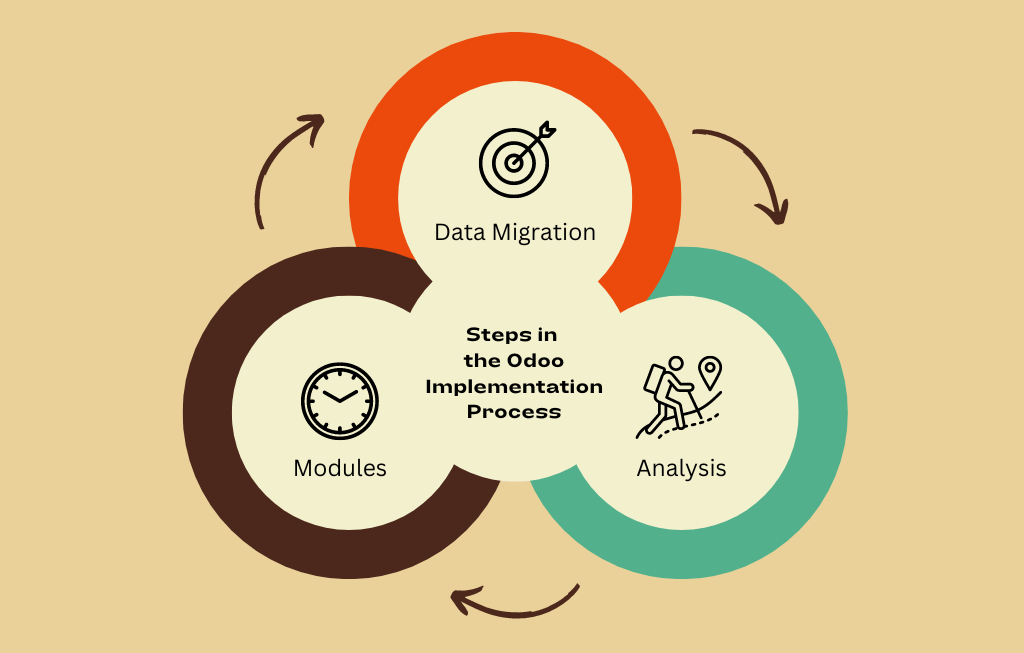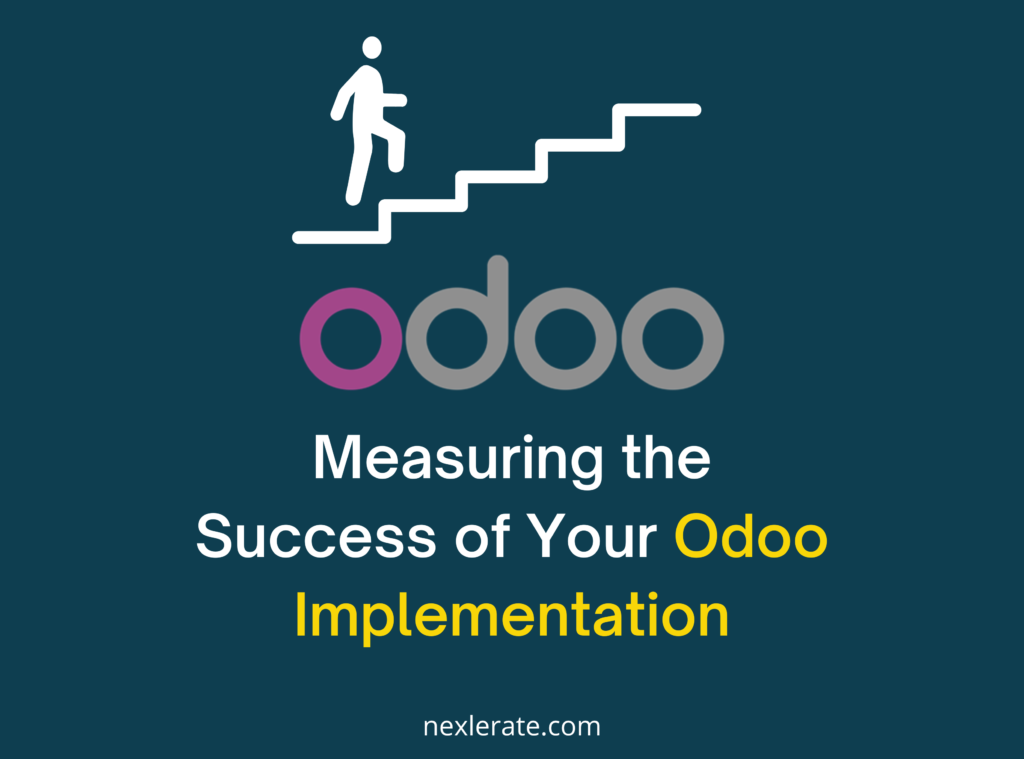Understanding the Benefits of Odoo for Small Businesses
Odoo is an open-source ERP software that has gained popularity with small enterprises for its adaptability and comprehensive list of applications. It allows businesses to start with just a few applications and then add more as they expand. This ensures that the system grows with the company, thus eliminating the need for expensive and difficult upgrades. Odoo Implementation is customizable because it is an open-source product, enabling businesses to optimize their processes.
Critical Considerations Before Implementing Odoo
Assessing Your Business Needs
Several key considerations must be considered to ensure that implementing Odoo is easy and successful for small businesses. The first is to evaluate their own company’s specific needs and objectives. Understanding why you are using Odoo makes it easier to know the best modules to use or how you will customize them properly. Finding out the areas where the current operations cause problems so that they can be solved with Odoo constitutes this initial stage.
Budget and Resources
The budget is another vital thing to keep in mind. Even though Odoo Implementation tends to be cheaper than other privately owned ERP systems, there are still expenses for setup, enhancement, and maintenance services. This means that small firms need to develop an itemized budget for these. You should also consider the knowledge of technical people within your firm. Someone working within should team up with those from outside when he (among them) needs to understand more.
Data Migration and Integration
Other crucial factors are integrating and transferring data with existing systems. This involves planning how the new data from Odoo will combine with the company’s current software applications and how to transfer from the old systems. For this to happen, wise planning and appropriate tools that guarantee data correctness and system compatibility are needed.
Change Management
Last but not least, change management is critical. It can significantly affect the implementation success if the team is prepared for the transition, provided with appropriate training, and any resistance to change addressed. When people are told why Odoo Implementation has advantages over other platforms and how it will help them perform their daily tasks better, they are likely to resist less while trying to ensure that things are moving smoothly.
Steps in the Odoo Implementation Process

Conducting a Needs Analysis
The migration of data is an integral part of the odoo implementation process. It means that you are transferring information from old systems into Odoo, making sure there are no missing pieces left anywhere, along with maintaining high-level accuracy and proper format in everything being brought forward by every single byte or record, if we may put it that way, it starts with doing a comprehensive data audit whereby you have to look at what currently exists especially nothing mistakes before cleaning them hence preparing them for purposes like transfer among others.
Mapping Data Fields
Soon after preparing and cleaning data, you align it with Odoo fields you have already interlinked. This way, the information maintains its originality during transfer and updating. To carry out this process correctly, a business can purchase data migration tools or involve programmers in automating everything.
Ensuring Seamless Integration
Another critical aspect of Odoo’s implementation is how established systems can fit in. It’s common for businesses to employ various software programs for different activities; hence, Odoo needs to be able to communicate and operate seamlessly on such systems. The connecting part may include setting up APIs, building personal adaptors, or using middleware to simplify system data swapping. An integrated Odoo system ensures that operational costs are kept low.
Training and Support for Successful Odoo Adoption
Tailoring Training Programs
Adequate training and continuous support for all users are necessary to ensure the successful adoption of Odoo. This training should begin at the onset of the implementation phase and continue until it is operational. The most important thing is to have different kinds of training depending on what each person does so that they know how best to use this software at their workplaces.
Providing Diverse Training Formats
Instructions come in many forms, such as live classes, internet lessons, and workshops. Additional methods include comprehensive documents and user manuals that help individuals understand a specific program. Finally, one can say that further promoting lifelong education together with increased enhancement will improve the adoption of new technologies.
Establishing Ongoing Support
Ongoing assistance is as necessary. Entrepreneurs should create a support system that involves internal assistance teams and outside experts and the possibility of entering the Odoo Implementation community and using its resources. By constantly overseeing the system’s work, collecting user’s opinions on time, and responding fast to any challenges that may come up, the head of the business can guarantee that Odoo will continue serving the needs of both the company it belongs to and the human beings running it.
Measuring the Success of Your Odoo Implementation

Defining Success Criteria
To ascertain the accomplishment of implementing Odoo, several aspects have to be taken into account, like measuring key performance indices (KPIs) and metrics. First, you need to have a clear picture of what success means in your company’s terms; thus, you may need to come up with different definitions based on the objectives set at certain planning times. Measuring process efficiency gains, reduced expenses, user contentment, and corporate performance are some of these known performance indices.
Tracking KPIs
After setting up the success criteria definitions, organizations should establish ways to manage KPIs. This can include using Odoo’s default reporting tools, integrating with BI Software, or developing custom dashboards. Analyzing the metrics from time to time helps identify what percentage of implementation was effective compared to planned goals.
Gathering User Feedback
Moreover, gathering information from users helps identify areas for improvement. Conducting surveys, having focus groups, or examining user support requests helps point out common problems so that businesses may be corrected. Odoo’s long-term success depends heavily on making better progress.
Common Challenges and How to Overcome Them
Addressing Resistance to Change
Several challenges must be overcome when implementing Odoo; it is important, therefore, to be aware of such issues and devise ways of overcoming them to increase the probability of its success. Resistance to change is a usual problem. Staff might want to refrain from integrating new systems and processes. Solving this problem requires sound change management, as well as transparency on what good Odoo brings and availing enough training and support mechanisms.
Ensuring Data Accuracy
Facing complication is also feasible with integration with existing systems. There should thus be an early plan in place for this with an aim of identifying possible point of integrations which should involve collaborations from expert panels to work towards harmonizing these processes.
Planning for Seamless Integration
Integration with existing systems can also be challenging. Businesses should plan for this early in the process, identifying potential integration points and working with experts to develop seamless solutions.
Managing Customizations
Customization can be another challenge, especially if it involves complex changes. Working with experienced Odoo developers or consultants can help ensure that customizations are done correctly and sustainably.
Providing Continuous Support
Finally, ongoing support and maintenance are critical. Establishing a robust support structure and regularly reviewing system performance can help address issues promptly and ensure continuous improvement.
Conclusion: Unlocking the Potential of Odoo for Your Small Business
Odoo offers a robust and versatile solution that small businesses targeting streamlined operations and enhanced efficacy can employ. By comprehending Odoo’s advantages, carefully organizing the implementation process, and considering key issues, enterprises can successfully assimilate Odoo and maximize its potential. Personalization, data transfer, incorporation, and continuous training support are vital to effective Odoo utilization.
For a more significant likelihood of success, unfold-defined KPIs and adequate preparedness for common hurdles are essential. Proper strategies can help small enterprises increase their productivity, improve decision-making processes, and accomplish their goals with the help of Odoo.
